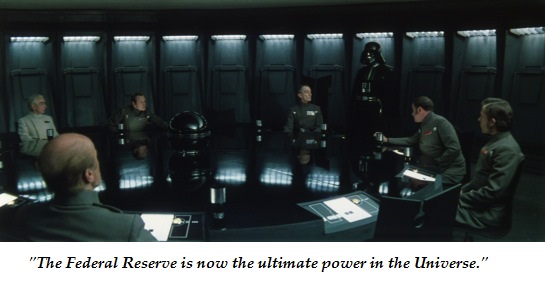Could the Fed Lose Control of the Frankenstein Economy It Has Created?
What if there are tail risks present in the Fed's Frankenstein Economy of the same sort that Greenspan et al. failed to identify in 2008?
A longtime correspondent emailed me last week about the apparent contradiction between a Federal Reserve that has had the power for five years to counteract any decline and my call for a market decline in 2014: why would the Fed allow a market it has pushed higher for five years to ever fall?

It's an excellent question, as it summarizes the key question: is there any limit on "don't fight the Fed?" Can the Fed push assets higher essentially forever? And if so, why did it fail to do so in 2008?
Former Federal Reserve chairman Alan Greenspan's recent bleatings in Foreign Affairs,Why I Didn't See the Crisis Coming, offered one primary reason: the Fed's models failed to accurately account for "tail risk," (otherwise known as things that supposedly happen only rarely but when they do happen, they're a doozy), because guess what--they happen more often than statistical models predict.
I would add that tail risk is a fancy name for unintended consequences of central planning. Thus Greenspan had more in common with failed Soviet planners than he would ever admit.
Greenspan also confessed that the Fed overcame the meltdown by creating and lending unlimited sums of money--yes, unlimited. Various accountings after the fact identified $16 trillion in direct Fed backstops and loans to global banks, but implied or indirect subsidies, backstops and lines of credit added tens of trillions of dollars to the total bailout of the privately held banking cartel.
This money spigot has remained open for five years, and a tiny reduction ($10 billion a month) is all the Fed dares to do lest the global markets melt down again.
So are there no "tail risks" or unintended consequences to leaving the money spigot fully open for five years running? Those who believe the Fed's record of five years of rising asset prices proves its ability to drive prices higher for another five years. In other words, having created a Frankenstein economy that depends on unlimited credit pumping, the Fed can control its monster with uncanny finesse.
The Fed's extraordinary success in suppressing risk, tail and every other variety, has given punters and strategists alike a supreme confidence in the Fed's ability to suppress risk for another five years, and another five years after that. (The similarity to Soviet-era five-year plans is ironic coincidence.)
What if there are tail risks present in the Fed's Frankenstein Economy of the same sort that Greenspan et al. failed to identify (or grossly under-estimated) in 2008?
If the limitless hubris of the Frankenstein story doesn't resonate for you, consider the unseen risks of monoculture agriculture as an apt analogy. In this view, the financial markets are a Fed-farmed monoculture that is sustained solely by massive quantities of financial fertilizers and carefully engineered "crops." The Fed claims its engineered monoculture is as resilient as a market-based ecosystem, but this is simply not true: monocultures are exquisitely vulnerable to tail risks that are impervious to the policies intended to kill all threats.
Indeed, in the monoculture analogy, central planning engineering perfects the power of threats to bypass the system's defenses.
Despite the supremacy of Fed hubris and punter confidence in the Fed's Frankenstein Economy, the likelihood of some tail risk emerging out of nowhere is rising. Indeed, the very confidence in central planners, i.e. that the Fed is now the ultimate power in the Universe, is a prerequisite for collapse.
Debt = Serfdom (April 2, 2013)
This essay was drawn from Musings Report 51, one of the weekly reports sent exclusively to subscribers and major contributors (i.e. those who contribute $50 or more annually).
The Nearly Free University and The Emerging Economy:
The Revolution in Higher Education
Reconnecting higher education, livelihoods and the economy

We must thoroughly understand the twin revolutions now fundamentally changing our world: The true cost of higher education and an economy that seems to re-shape itself minute to minute.
Things are falling apart--that is obvious. But why are they falling apart? The reasons are complex and global. Our economy and society have structural problems that cannot be solved by adding debt to debt. We are becoming poorer, not just from financial over-reach, but from fundamental forces that are not easy to identify. We will cover the five core reasons why things are falling apart:
 1. Debt and financialization
1. Debt and financialization2. Crony capitalism
3. Diminishing returns
4. Centralization
5. Technological, financial and demographic changes in our economy
Complex systems weakened by diminishing returns collapse under their own weight and are replaced by systems that are simpler, faster and affordable. If we cling to the old ways, our system will disintegrate. If we want sustainable prosperity rather than collapse, we must embrace a new model that is Decentralized, Adaptive, Transparent and Accountable (DATA).
We are not powerless. Once we accept responsibility, we become powerful.
Kindle: $9.95 print: $24



























